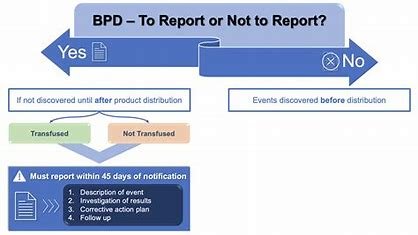Learn the process of reporting Biological Product Deviations (BPD) to the FDA. Understand the steps involved, the significance of timely reporting, and how BioBoston Consulting can guide your compliance efforts.
In this blog, we will discuss the primary process that is implicated in Biological Product Deviations (BPD) reporting which is essential for life science manufacturers to find a smooth paddle in the compliance.
It is imperative that manufacturers within the life sciences space navigate this regulatory landscape appropriately.
A key component of compliance in this industry is the reporting to the FDA on Biologics Product Deviations (BPD). BPD reports are essential because they improve recognition and management of deviations that could compromise safety, purity, or potency of distributed products, which can include biological products, and Human Cell and Tissue Products (HCT/Ps).
Now let us look at the various elements involved in this reporting process of the BPD to the FDA and discuss its importance.
The Significance of Reporting Deviations from Biology Products
BPD is not just a regulatory requirement; it is essential to ensuring product integrity in the life sciences industry. Here is why it matters:
Ensuring Safety: BPD reports act as alarms for manufacturers to identify and address divergences that could potentially influence the safety of the products. This proactive approach goes a long way in ensuring that patients and consumers are not harmed. 21 CFR, Part 600.14 (biological products) or 606.171, and for HCT/Ps 21 CFR 1271.350(b) (FDA requirement to report deviations) guarantee that manufacturers reach the highest levels.
Risk Reduction: Manufacturers might avoid risk by rapid signal deviation. This not only protects product quality but also the name of the company.
Public Health Protection:
The BPD report is designed to maintain public health protections. It protects the safety, purity, and potency of distributed products, and demonstrates the industry commitment to consumer well-being.
What do we need to know about BPD Reporting Process?
Steps and Considerations: In Reporting BPD to the FDA, Let us break down the process:
Facility Information
Establishment Information: Report establishment name, address, and contact information for the establishment including point of contact name, telephone number, and email address.
Reporting Establishment Identification Number
Manufacturers are required to enter either a valid registration number or CLIA number. This might be the FDA Establishment Identifier (FEI) that the facility has been assigned as a registration number. Only a CLIA number may be used if there is no registration number.
Additional Establishment Information: If the BPD text refers to an establishment other than the one where the report is made, then additional information about that establishment such as its name, address, and identification number must be provided.
Basic Biological Product Deviation (BPD) Information
It should be a unique internal tracking number to identify each BPD report. This number is used to identify individual reports and it should contain no more than 25 numbers and/or characters.
Date BPD Occurred – date of the deviation/unexpected event in the format mm/dd/yyyy
Date BPD was Discovered: If a BPD was discovered, the date it was discovered is the date the manufacturer obtains information suggesting a reportable event has occurred. This date is in the format mm/dd/yyyy and for manufacturing companies it is mandated to provide this date.
Date BPD Submitted: The date the report is complete should be reported in the mm/dd/yyyy format.
BPD Description:
Manufacturers submit a narrative about the event, describing what happened and providing a summary of all pertinent information related to the report. Do not include private or confidential information, including patient, donor or employee names.
Description of Contributing Factors or Root Cause:
Manufacturers must describe all contributing factors or root causes of the deviation or unexpected event. Where following investigation, a root cause cannot be identified, this should be clearly stated.
Follow-up:
The manufacturers should provide a short-term and long-term follow-up action plan (if applicable). Corrective actions identified at the time the report is filed need not be taken right away as long as there is a plan in place for addressing.
Conclusion
Due to the far-reaching impact of this, both from a public health standpoint and for public relations, manufacturers in this field need to take this obligation seriously. With its ability to quickly pinpoint and rectify divergences, organizations can show their dedication to consumer safety, product quality, and industry regulations.
Given this backdrop, it is critical for manufacturers to be proactive in maintaining the high standards of regulatory compliance as life sciences continues to push the envelope of cutting-edge technology.
In doing so, they make the world a safer, more innovative place in which tumultuous advancements meet pristine safety practices to make the world a better place and healthcare a better industry for everyone.
To find out more about how we help you and your organisation contact BioBoston Consulting today or click on our weblink.


